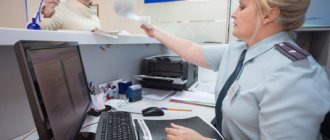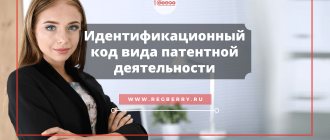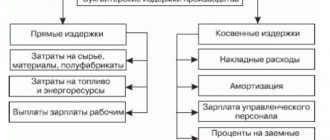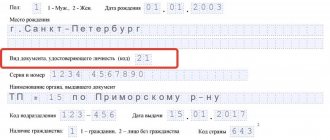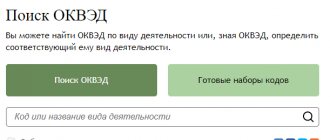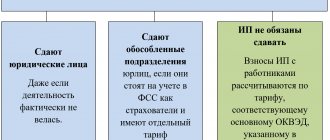How to use the classifier
The easiest and fastest way to find the code you need is to search.
Start entering the name of the desired product or work, and the service will offer suitable options. The more you enter, the more accurate the list will be.
When you find a suitable option in the list, click on it with the mouse cursor, and then click on the Search button to get the OKPD 2 code.
What is it needed for
The OKPD 2 2022 directory with decoding by type of activity is necessary to codify the huge volume of goods supplied, work performed and services provided. Each product or type of activity is verified, standardized and identified.
A classifier such as OKPD 2 from 2022 with decoding with search by name significantly facilitates the work of both customers - all their procurement needs are systematized in a single document, and suppliers, who can thus find and filter only those tenders that are directly related to their main activity. The OKPD 2 directory is also used by legislators - all regulations that establish the rules for conducting certain types of economic activities are united by a certain coding.
OKPD code 2 is also indicated when preparing some financial, accounting and statistical reports. This is necessary for further compilation of data on the types of activities of accountable persons.
Using the product classifier, organizations can find out about the tax benefits they are entitled to.
Tax disputes related to activities under an unspecified OKVED code
The entire “reinforced concrete” logic of tax officials is based on their constant desire to not recognize the taxpayer’s right to a tax benefit or to reduce the tax base. Everything comes into play here, including the refusal to accept expenses for transactions with counterparties if they do not indicate the type of activity for which the business transaction took place.
Most often, such refusals are associated with the recognition of expenses when calculating income tax and VAT refund. Judges in such disputes, as a rule, side with the businessman, but if you do not want to bring the matter to court, then it is better to make sure that your partner has the required OKVED code.
Another important point is when tax authorities unreasonably try to prove that activities under an unspecified OKVED code are, in principle, not entrepreneurial. In particular, there are known denials of the right to apply a tax rate of 6% for an entrepreneur on the simplified tax system for income if he received this income under unspecified OKVED codes. The Federal Tax Service is trying to tax such income with personal income tax at a rate of 13%, as received by an individual from activities not related to business.
What does it look like
The current reference book is OK 034-2014. All codes are compiled in a hierarchical classification method. Let's imagine the encoding order in the table.
| Discharge | Name |
| XX | Class - a general designation, without detailing the main characteristics |
| XX.X | Subclass - depends on the intended use of the product |
| XX.XX | Group - determines the composition of the product |
| XX.XX.X | Subgroup - includes data on the scope of application of goods |
| XX.XX.XX | Type - indicates information about specific consumer properties of the product |
| XX.XX.XX.XX | Category - maximum detail |
| XX.XX.XX.XXXX | Subcategory - maximum detail |
OKVED2: occupational safety training
Educational activities in the field of labor protection, like other areas, have their own code designation. OKVED on labor protection and training in this area has the following parameters:
- section - P, “Education”;
- class - 85, “Education”;
- subclass - 85.4, “Additional education”;
- group - 85.42, “Additional professional education”;
- subgroup - 85.42.9, “Other activities for additional professional education, not included in other groups.”
This definition of the OKVED-2 code for the purpose of classifying additional education in the field of labor protection is confirmed by the provisions of Rosstandart order dated September 28, 2016 N 1236-st. This regulatory document clarifies that subgroup 85.42.9 includes the following activities:
- security personnel training courses;
- speed reading courses;
- survival courses;
- public speaking courses;
- professional training, retraining, advanced training and additional vocational education for specialists working in the field of nuclear energy;
- training of employers and workers on labor protection issues.
Thus, to uniquely identify organizations providing educational services in the field of occupational safety and health, you need to use the OKVED-2 code containing 5 characters. This is necessary in order to separate such organizations from other educational institutions that provide services included in this group. The current classifier does not provide for the use of a six-digit code for this specific area of work.
The use of the correct OKVED-2 code will be extremely important when preparing supporting documents for clients of an educational organization, for example, when conducting instruction or training in occupational safety in accordance with the requirements of the joint order of the Ministry of Education and the Ministry of Labor of January 13, 2003 N 1/29.
Inconsistency of the OKVED-2 code with the main type of activity of the company may raise questions among regulatory authorities who will check the training documents issued to students who have undergone training in such an organization.
How the code is generated
Although OKPD 2 is an all-Russian classifier, it must be compiled according to the rules of the European Union Product Classification (CPES 2008). That is why each digit of the identifier is separated by a dot. The largest sections are designated by letters of the Latin alphabet.
Some types of products are characterized by more detailed identification for narrowly targeted categories of goods or services. In such cases, the characters from the seventh to the ninth code must have a certain, non-zero value. If the type of product does not require detail, then numbers seven to nine may have a zero value.
Why is the OKVED code needed and where is it used?
By registering your business, a person thereby informs the state of the type of activity of his business. First of all, OKVED codes are needed by tax authorities and Rosstat.
Thanks to OKVED codes, Rosstat has the opportunity to collect and analyze statistical information. The obtained results of the analysis are used when grouping types of business activities.
Using OKVED, the tax service can determine the tax system that is suitable for a particular type of business activity. It is important to note that not only the tax burden, but also the volume of the authorized capital, as well as the process and need to obtain a license depend on the OKVED code.
Controlling authorities, through OKVED codes, are able to monitor the actions of all economic entities.
Entrepreneurs begin to realize the importance and necessity of OKVED when contacting financial institutions. If the organization does not have a classifier, the bank may refuse to register a current account. This is due to the fact that the OKVED code is the primary requisite that must be indicated when concluding contracts.
How to use
The updated classifier has been used since 01/01/2017. The register is fixed by Order of Rosstandart No. 14-st dated January 31, 2014. The official website of OKPD 2 2022 with a transcript does not exist, you can use our service.
The directory is necessary to search for specific products by type of activity. Thanks to the hierarchical structure, the search for system units is based on clarifying information. Positions are formed starting with a more generalized meaning. If the user has information about specific consumer properties, he can move to each subsequent category, and will eventually reach a category or subcategory that most accurately details the goods, works or services.
Scope of application
The OKPD 2 code replaced the outdated OPD and OKPD directories. The new classifier is used everywhere. The meaning and unified classifier OKPD 2 from 2022 with decoding was put into effect by Order of Rosstandart dated January 31, 2014 No. 14-st.
Officials understood that it was impossible to update all the codes in the documentation overnight. Therefore, several years were allotted for the transition period. The use of the old and new classifiers was allowed until 2022. And from 01/01/2017 you can only use OKPD 2 - the current code of products, works and services by type of activity.
OKPD 2 in government procurement
The OKPD 2 classifier from 2022 with a breakdown by type of economic activity is indispensable when conducting procurement activities. All purchases within the framework of 44-FZ and 223-FZ must be specified. The codes are needed both by potential contractors to search for orders, and by the customers themselves - to publish procurement plans in the Unified Information System (formation of a procurement identification code), to clarify the code of the subject of a government order in schedules, to publish a notice of the acquisition of necessary goods, works, services.
Based on the OKPD 2 identifier, suppliers track the required tenders. Coding accumulates the necessary information, and this is necessary for potential contractors, since customer organizations do not always correctly describe the procurement object. Product coding also helps to find narrowly targeted orders with specific or consumer properties of the purchased products.
The OKVED system will be reformed based on revenue by type of business
The Ministry of Economic Development has developed a concept for reforming the system for applying codes of the All-Russian Classifier of Types of Economic Activities (OKVED, where all types of business activities are designated by numerical codes). The development was supervised by First Deputy Prime Minister Andrei Belousov, Vedomosti writes with reference to a representative of the Ministry of Economic Development.
In early December, following a meeting of the government commission for the development of small and medium-sized enterprises (SMEs), Prime Minister Mikhail Mishustin instructed the Ministry of Economic Development and the Federal Tax Service to prepare changes to the system for using OKVED codes by businesses. The concept of this reform involves a number of innovations:
- the codes themselves are supposed to be determined by revenue from the corresponding type of activity of the company;
- companies (as well as individual entrepreneurs) will need to indicate those types of businesses that cover at least 80% of total revenue and account for more than 10% of income;
- it is not intended to introduce limits on the number of specified types of company activities or limit the right to conduct activities other than licensed ones, without reference to OKVED;
- the main type of activity from which the business receives the most revenue will be considered;
- if the revenue structure changes by more than 20 percentage points, the business will need to officially update it and clarify OKVED codes;
- for non-profit organizations (NPOs), codes will be assigned based on the number of employees in a particular type of activity, and the main OKVED will be the one with the most personnel registered;
- A special service will be launched on the Federal Tax Service platform, which will help to correctly determine the types of activities for registration in the register. For first-time registrants there will be an interactive assistant;
- users of the service will be able to integrate their accounting systems with Federal Tax Service tools to automate the reporting procedure;
- out of nine reporting forms, five will remain, three of them will be generated automatically using digital services of the Federal Tax Service;
- a unified register of data on OKVED will be maintained by the Federal Tax Service, confirmation of codes will be carried out annually - for large and medium-sized businesses, and if revenue changes by more than 20% by type of activity - for micro and small enterprises.
Material on the topic
Two of the newspaper’s interlocutors close to the government and one familiar with the situation reported that the Federal Tax Service proposed limiting the maximum number of activities that a SME company has the right to register. According to them, the initiative was not supported by the government.
Advertising on Forbes
The need to reform the OKVED system emerged during the pandemic, when the main OKVED code became confirmation of belonging to the affected industry, whose enterprises could qualify for subsidies, preferential loans and other support measures. A significant portion of companies were denied assistance due to discrepancies between formal (according to information in the Unified State Register of Legal Entities) and actual activities.
Material on the topic
OKVED replaced the Soviet system of determining the industry sector of a business at the beginning of the 2000s, Prime Minister Mishustin recalled at a meeting of the commission on SMEs on December 1. Taxpayers chose their own codes, but no system for monitoring changes in the main activities of companies was provided. As an example, Mishustin named Gazprom, which 20 years ago was classified as a transport company.
According to the head of the Federal Tax Service, Daniil Egorov, the tax service will be the only “point” where it will be possible to declare types of economic activity. Other types of reporting, in particular for the Social Insurance Fund, will become a thing of the past. The Federal Tax Service, according to Egorov, together with suppliers of ERP systems (software for managing business processes, including cash flow accounting), is developing solutions that will automate the provision of information about types of activities.
Material on the topic
Executive Director of Opora Russia Andrei Shubin considers the proposed reform beneficial to both the government and business. But for a significant part of individual entrepreneurs it has yet to be made clear - entrepreneurs are often not advanced users of certain digital systems. Co-chairman of Business Russia Anton Danilov-Danilyan called the proposed reform a step forward, but a half-hearted one. Advisor to the practice of administrative law and lawmaking at Egorov, Puginsky, Afanasiev and Partners Pavel Sukholinsky noted that the changes are quite capable of significantly improving the situation. For business, reporting will at least be simplified, and for the state, the collection and analysis of data on the activities of enterprises will be optimized.
